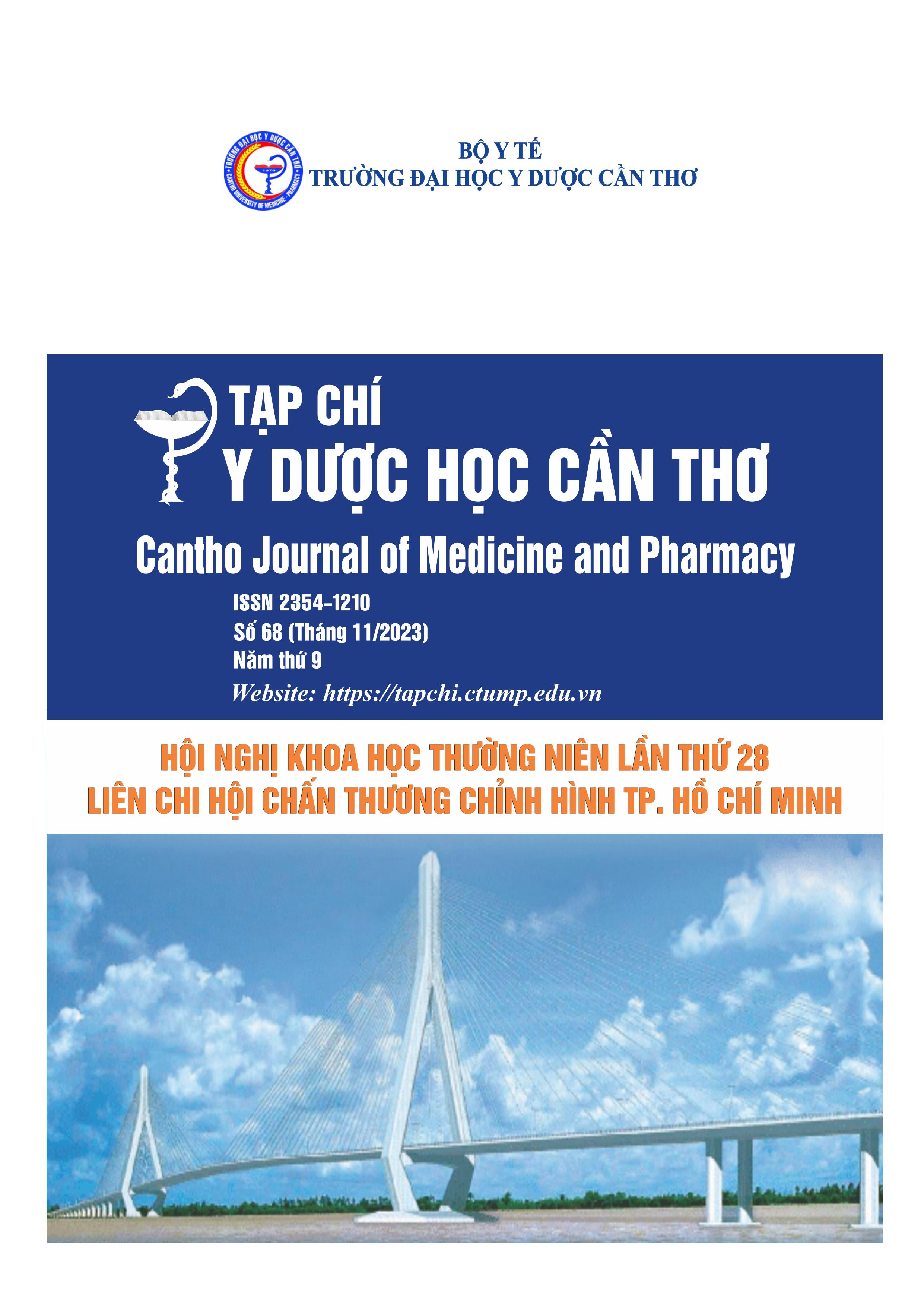RESULT OF SURGERY TREATMENT OF UNSTABLE INTERTROCHANTERIC FEMUR FRACTURE IN ELDERLY BY PROXIMAL FEMORAL NAIL ANTIROTATION (PFNA) WITH MINIMALLY INVASIVE PLATE OSTEOSYNTHESIS
Main Article Content
Abstract
Background: Unstable intertrochateric femur fractures in elderly are common due to fall and osteoporosis… Many surgical procedures have been used to treat these fractures including reduction and osteosynthesis using DHS, AO plate, gamma nail and hemi prosthesis…However, unstable intertrochanteric femur fracture in the elderly with general status and osteoporosis, the technique of minimally invasive with proximal femoral nail antirotation (PFNA) is a means of fixing with positive results: Biological, minimal soft tissue compromise and devascularization, reducing risks of infection and nonunion and early function recovery. Objectives: To evaluate the results of bone healing and rehabilitation, investigate complications. Materials and method: A prospective study on 37 patient’s unstable intertrochanteric femur fracture in elderly from April 2020 to April 2023 at Sai Gon - ITO Phu Nhuan hospital, Ho Chi Minh City. Results: The mean follow up period was 14.2 months (range, 12 - 27). Excellent and good results were accounted for 80.6% of cases according to Harris hip score. Conclusion: We recommend PFNA for fixation of unstable intertrochanteric fractures with less operative time and low complication rate.
Article Details
Keywords
Intertrochanteric femur fracture, technique of minimally invasive, proximal femoral nail antirotation (PFNA)
References
2. Rai B, Singh J, Singh V, Singh G, Pal B et al. Evaluation of the Outcomes of Proximal Femoral Nail Antirotation II in the Treatment of Trochanteric Fracture in Elderly Patients. Cureus. 14(5), doi: 10.7759/cureus.24896
3. Kumar GNK, Sharma G, Khatri K, Farooque K, Lakhotia D et al. Treatment of Unstable Intertrochanteric Fractureswith Proximal Femoral Nail Antirotation II: Our Experience in Indian Patients. Open Orthop J. 2015 Nov 19;9:456–9, doi: 10.2174/1874325001509010456.
4. Mallya S, Kamath SU, Annappa R, Nazareth NE, Kamath K, Tyagi P. The Results of Unstable Intertrochanteric Femur Fracture Treated with Proximal Femoral Nail Antirotation-2 with respect to Different Greater Trochanteric Entry Points. Adv Orthop. 2020, doi: 10.1155/2020/2834816
5. Mao W, Ni H, Li L, He Y, Chen X et al. Comparison of Baumgaertner and Chang reduction quality criteria for the assessment of trochanteric fractures. Bone Joint Res. 2019 Nov 2;8(10):502–8, doi: 10.1302/2046-3758.810.
6. Morshed S, Corrales L, Genant H, Miclau T. Outcome assessment in clinical trials of fracturehealing. J Bone Joint Surg Am. 2008 Feb;90 Suppl 1:62–7, doi: 10.2106/JBJS.G.01556.
7. Mereddy P, Kamath S, Ramakrishnan M, Malik H, Donnachie N. The AO/ASIF proximal femoral nail antirotation (PFNA): a new design for the treatment of unstable proximal femoral fractures. Injury. 2009 Apr;40(4):428–32, doi: 10.1016/j.injury.2008.10.014
8. Nikoloski AN, Osbrough AL, Yates PJ. Should the tip-apex distance (TAD) rule be modified for the proximal femoral nail antirotation (PFNA)? A retrospective study. J Orthop Surg Res. 2013 Oct 17;8:35, doi: 10.1186/1749-799X-8-35.
9. Takigami I, Matsumoto K, Ohara A, Yamanaka K, Naganawa T, Ohashi M, et al. Treatment of trochanteric fractures with the PFNA (proximal femoral nail antirotation) nail system - report of early results. Bull NYU Hosp Jt Dis. 2008;66(4):276–9, PMID: 19093903.


